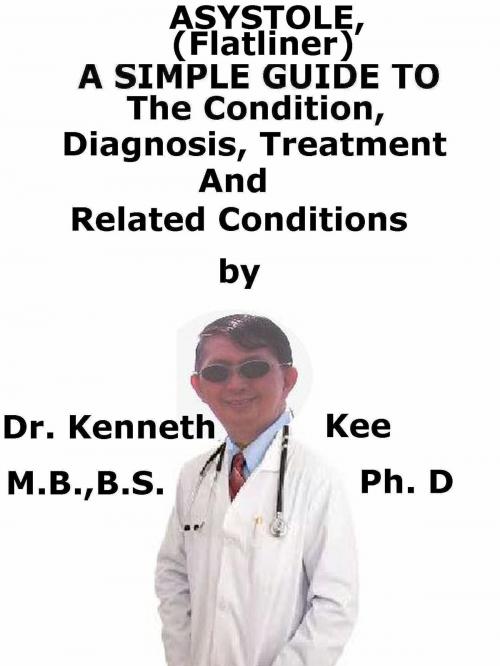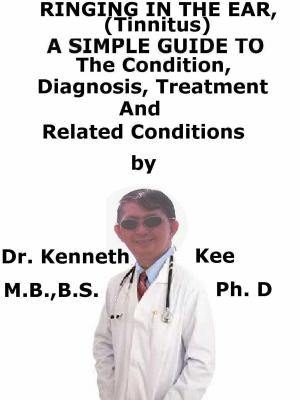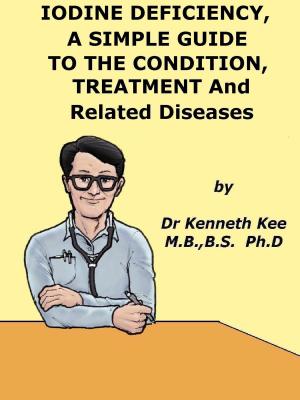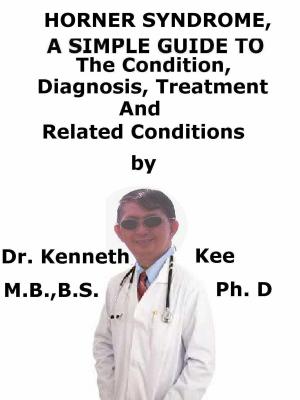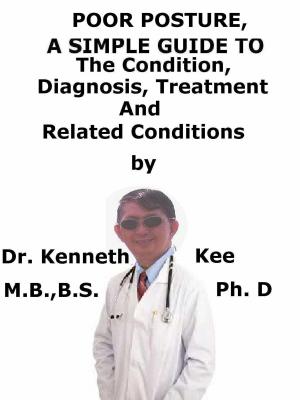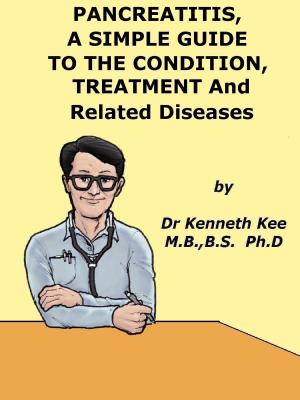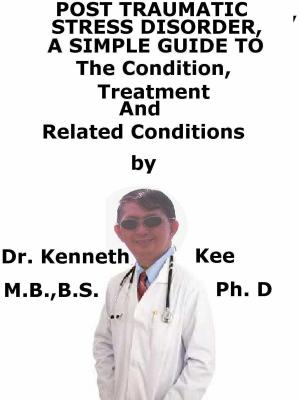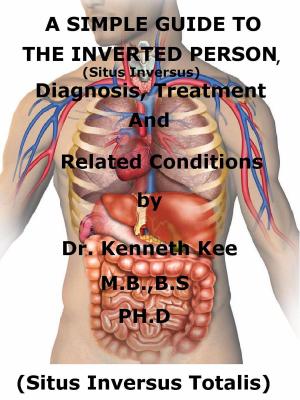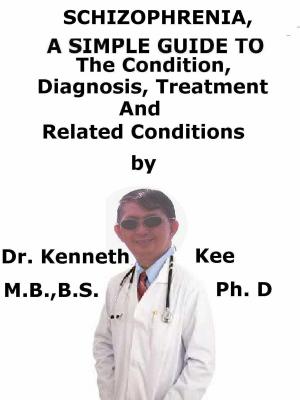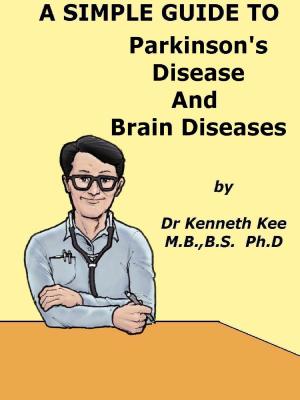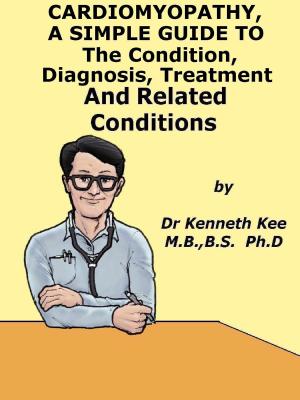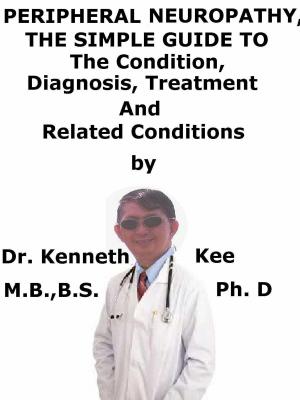Asystole, (Flatliner) A Simple Guide To The Condition, Diagnosis, Treatment And Related Conditions
Nonfiction, Health & Well Being, Medical, Specialties, Internal Medicine, Cardiology, Health, Ailments & Diseases, Heart| Author: | Kenneth Kee | ISBN: | 9781370191857 |
| Publisher: | Kenneth Kee | Publication: | April 7, 2018 |
| Imprint: | Smashwords Edition | Language: | English |
| Author: | Kenneth Kee |
| ISBN: | 9781370191857 |
| Publisher: | Kenneth Kee |
| Publication: | April 7, 2018 |
| Imprint: | Smashwords Edition |
| Language: | English |
This book describes Asystole (Flatliner), Diagnosis and Treatment and Related Diseases
Asystole
Flatliners is a movie where 5 medical students stop their heart beat by using electric shock to their heart for longer and longer periods of time before being resuscitated back by their friends.
I saw the 1990 version of this movie. It was particularly interesting for me as a medical doctor. Apparently there is 2017 version of this movie.
A cardiac flatline is the state of total cessation of electrical activity from the heart, which means no tissue contraction from the heart muscle and therefore no blood flow to the rest of the body.
While the heart is asystolic, there is no blood flow to the brain unless CPR or internal cardiac massage (when the chest is opened and the heart is manually compressed) is performed, and even then it is a small amount.
After many emergency treatments have been applied but the heart is still unresponsive, it is time to consider pronouncing the patient dead.
Even in the rare case that a rhythm reappears, if asystole has persisted for fifteen minutes or more, the brain will have been deprived of oxygen long enough to cause brain death.
Cardiac arrest (unlike asystole) is brought on by irregular beating of the heart that causes it to stop supplying blood flow to the other organs, including the brain.
In cardiac arrest the heart is still beating irregularly (the ECG shows abnormal rhythm) while in asystole the heart is completely not beating (ECG is a flatline)
Asystole is completely different from cardiac arrest.
Asystole is a critical type of cardiac arrest in which the heart stops beating and there is no electrical activity in the heart.
As a result, the heart is at a total stop.
When a person goes into asystole, the person must be rapidly revived using CPR.
Asystole is treated by cardiopulmonary resuscitation (CPR) combined with an intravenous vasopressor medicine such as epinephrine (adrenaline)
Many other methods may be done such as defibrillation or medicines can also be given such as atropine, epinephrine, vasopressin, internal cardiac massage (the person is opened up and pressure is applied directly to the heart).
- Primary asystole forms when cellular metabolic functions are no longer whole and an electrical impulse cannot be produced.
With serious ischemia, pacemaker cells cannot transport the ions needed to affect the trans-membrane action potential.
Implantable pacemaker malfunction may also be a cause of primary asystole.
Proximal occlusion of the right coronary artery can produce ischemia of both the sinoatrial (SA) and the atrioventricular (AV) nodes.
Secondary asystole
Frequent causes are:
1.Suffocation,
2.Near drowning,
3.Stroke,
4.Massive pulmonary embolus,
5.Hyper-kalemia,
6.Hypothermia,
Symptoms:
A rhythm that is truly asystole and has been present for more than several seconds will cause the patient to be unconscious and not responsive.
A few agonal (final gasping) breaths may be observed
The detectable heart sounds and palpable peripheral pulses are absent.
Diagnosis
Asystole is normally a diagnosis made through continuing cardiac monitoring or electrocardiogram (ECG) and physical examination with pulse-less-ness.
Treatment
Electrical defibrillation is never the first choice of treatment in the patient in asystole
The treatments in the emergency department are:
1.Providing oxygenation and ventilation through endotracheal intubation and
2.Improving circulation through cardiopulmonary resuscitation (CPR),
3.Attempting transcutaneous or transvenous pacing
4.Administrating of pharmacologic agents.
The only 2 drugs advised are epinephrine and vasopressin
Vasopressin gives a better prognosis than epinephrine although it is poor in both cases.
TABLE OF CONTENT
Introduction
Chapter1 Asystole
Chapter2 Causes
Chapter3 Symptoms
Chapter4 Diagnosis
Chapter5 Treatment
Chapter6 Prognosis
Chapter7 Cardioversion
Chapter8 Cardiac Arrest
This book describes Asystole (Flatliner), Diagnosis and Treatment and Related Diseases
Asystole
Flatliners is a movie where 5 medical students stop their heart beat by using electric shock to their heart for longer and longer periods of time before being resuscitated back by their friends.
I saw the 1990 version of this movie. It was particularly interesting for me as a medical doctor. Apparently there is 2017 version of this movie.
A cardiac flatline is the state of total cessation of electrical activity from the heart, which means no tissue contraction from the heart muscle and therefore no blood flow to the rest of the body.
While the heart is asystolic, there is no blood flow to the brain unless CPR or internal cardiac massage (when the chest is opened and the heart is manually compressed) is performed, and even then it is a small amount.
After many emergency treatments have been applied but the heart is still unresponsive, it is time to consider pronouncing the patient dead.
Even in the rare case that a rhythm reappears, if asystole has persisted for fifteen minutes or more, the brain will have been deprived of oxygen long enough to cause brain death.
Cardiac arrest (unlike asystole) is brought on by irregular beating of the heart that causes it to stop supplying blood flow to the other organs, including the brain.
In cardiac arrest the heart is still beating irregularly (the ECG shows abnormal rhythm) while in asystole the heart is completely not beating (ECG is a flatline)
Asystole is completely different from cardiac arrest.
Asystole is a critical type of cardiac arrest in which the heart stops beating and there is no electrical activity in the heart.
As a result, the heart is at a total stop.
When a person goes into asystole, the person must be rapidly revived using CPR.
Asystole is treated by cardiopulmonary resuscitation (CPR) combined with an intravenous vasopressor medicine such as epinephrine (adrenaline)
Many other methods may be done such as defibrillation or medicines can also be given such as atropine, epinephrine, vasopressin, internal cardiac massage (the person is opened up and pressure is applied directly to the heart).
- Primary asystole forms when cellular metabolic functions are no longer whole and an electrical impulse cannot be produced.
With serious ischemia, pacemaker cells cannot transport the ions needed to affect the trans-membrane action potential.
Implantable pacemaker malfunction may also be a cause of primary asystole.
Proximal occlusion of the right coronary artery can produce ischemia of both the sinoatrial (SA) and the atrioventricular (AV) nodes.
Secondary asystole
Frequent causes are:
1.Suffocation,
2.Near drowning,
3.Stroke,
4.Massive pulmonary embolus,
5.Hyper-kalemia,
6.Hypothermia,
Symptoms:
A rhythm that is truly asystole and has been present for more than several seconds will cause the patient to be unconscious and not responsive.
A few agonal (final gasping) breaths may be observed
The detectable heart sounds and palpable peripheral pulses are absent.
Diagnosis
Asystole is normally a diagnosis made through continuing cardiac monitoring or electrocardiogram (ECG) and physical examination with pulse-less-ness.
Treatment
Electrical defibrillation is never the first choice of treatment in the patient in asystole
The treatments in the emergency department are:
1.Providing oxygenation and ventilation through endotracheal intubation and
2.Improving circulation through cardiopulmonary resuscitation (CPR),
3.Attempting transcutaneous or transvenous pacing
4.Administrating of pharmacologic agents.
The only 2 drugs advised are epinephrine and vasopressin
Vasopressin gives a better prognosis than epinephrine although it is poor in both cases.
TABLE OF CONTENT
Introduction
Chapter1 Asystole
Chapter2 Causes
Chapter3 Symptoms
Chapter4 Diagnosis
Chapter5 Treatment
Chapter6 Prognosis
Chapter7 Cardioversion
Chapter8 Cardiac Arrest
